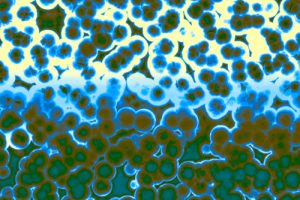Executive dysfunction involves a range of symptoms affecting cognitive processes, impacting everyday functioning and decision-making.
This article explores executive dysfunction’s symptoms and provides management strategies to help individuals cope with its challenges.
What is Executive Dysfunction?
Executive dysfunction refers to the impairment of cognitive processes that manage and regulate other cognitive functions. These processes, collectively known as executive functions, govern planning, organising, working memory, time management, attention, and problem-solving. When executive dysfunction occurs, it often results in a wide range of challenges, affecting daily tasks and interpersonal relationships.
The symptoms of executive dysfunction are diverse. Individuals may struggle with prioritising tasks, frequently procrastinate, or have difficulty initiating and completing projects. In severe cases, executive dysfunction can lead to disorganisation, impulsive behaviour, or difficulty regulating emotions. It is a common feature in neurological conditions such as Attention Deficit Hyperactivity Disorder (ADHD), autism spectrum disorders, and traumatic brain injuries. Understanding these symptoms is critical to addressing executive dysfunction’s impact on individuals’ lives.
Common Symptoms
Executive dysfunction can manifest through various symptoms, impacting multiple aspects of an individual’s life. Common symptoms include:
Disorganisation: People with executive dysfunction often struggle to maintain order, resulting in cluttered workspaces and difficulty tracking personal items. This can hinder everyday tasks, like locating keys or important documents .
Poor Time Management: These individuals often have trouble planning and following schedules. This can lead to missed deadlines, lateness, or underestimating how long tasks will take .
Procrastination and Inattention: Executive dysfunction can cause frequent procrastination, leading to delayed task completion. Individuals with this condition may also find it challenging to sustain focus, resulting in distractions and unfinished projects .
Difficulty Regulating Emotions: Emotional dysregulation is another common symptom, where individuals experience mood swings, irritability, or intense emotional reactions to minor setbacks.
Management Strategies for Executive Dysfunction
Managing executive dysfunction requires a multifaceted approach, combining therapeutic interventions, behavioural strategies, and environmental modifications. Effective management strategies can improve daily functioning and enhance quality of life for individuals with executive dysfunction.
Cognitive Behavioural Therapy (CBT)
CBT is a widely used approach to manage executive dysfunction. CBT helps individuals identify and change negative thought patterns and behaviours. It has been shown to be effective in enhancing organisational skills and improving time management. Studies indicate that CBT can also help in addressing procrastination and boosting focus. Sessions typically involve setting specific goals, using structured routines, and practising new skills to improve overall executive function.
Medication
Medication can be an integral part of managing executive dysfunction, especially when it coexists with conditions like ADHD. Stimulant medications, such as methylphenidate and amphetamine salts, are commonly prescribed to enhance focus and attention. These medications act on neurotransmitters in the brain, promoting increased concentration and reducing impulsivity . Non-stimulant medications, such as atomoxetine and guanfacine, may also be used, particularly if stimulants are not well tolerated.
Environmental Modifications
Creating a supportive environment is key to managing executive dysfunction. This includes organising workspaces to reduce clutter, using visual cues and reminders, and establishing consistent routines. By minimising distractions and providing clear structure, these modifications can help individuals stay on task and improve overall productivity.
Behavioural Strategies
Behavioural strategies involve practical approaches to improve executive function. Techniques like breaking tasks into smaller steps, using to-do lists, and setting specific goals can be beneficial. Additionally, establishing a consistent daily routine and using time management tools, such as timers and planners, can assist in maintaining focus and reducing procrastination.
Moving Forward with Executive Dysfunction Management
Executive dysfunction presents unique challenges, affecting various aspects of life, including academic performance, work productivity, and personal relationships. The key to management lies in a multi-faceted approach, integrating therapeutic interventions, medication, environmental modifications, and behavioural strategies. Understanding the condition’s symptoms and implementing effective management techniques can significantly improve the quality of life for struggling individuals.
Awareness and education are also critical. By raising awareness among individuals, families, and educators, society can better support. This support can lead to earlier diagnosis and intervention, ultimately fostering a more inclusive environment for everyone.
References
- Diamond A. Executive functions. Annu Rev Psychol. 2013;64:135-68. doi: 10.1146/annurev-psych-113011-143750. Epub 2012 Sep 27. PMID: 23020641; PMCID: PMC4084861.
- APA PsycNet. (n.d.). https://psycnet.apa.org/record/2012-15750-000
- A New Understanding of ADHD in Children and Adults: Executive Function Impairments. (2013, January 5). Routledge & CRC Press. https://www.routledge.com/A-New-Understanding-of-ADHD-in-Children-and-Adults-Executive-Function-Impairments/Brown/p/book/9780415814256
- Handbook of Executive Functioning. (n.d.). SpringerLink. https://link.springer.com/book/10.1007/978-1-4614-8106-5
- Meltzer, L. E. (n.d.). Executive Function in Education: From Theory to Practice. https://eric.ed.gov/?id=ED493739













